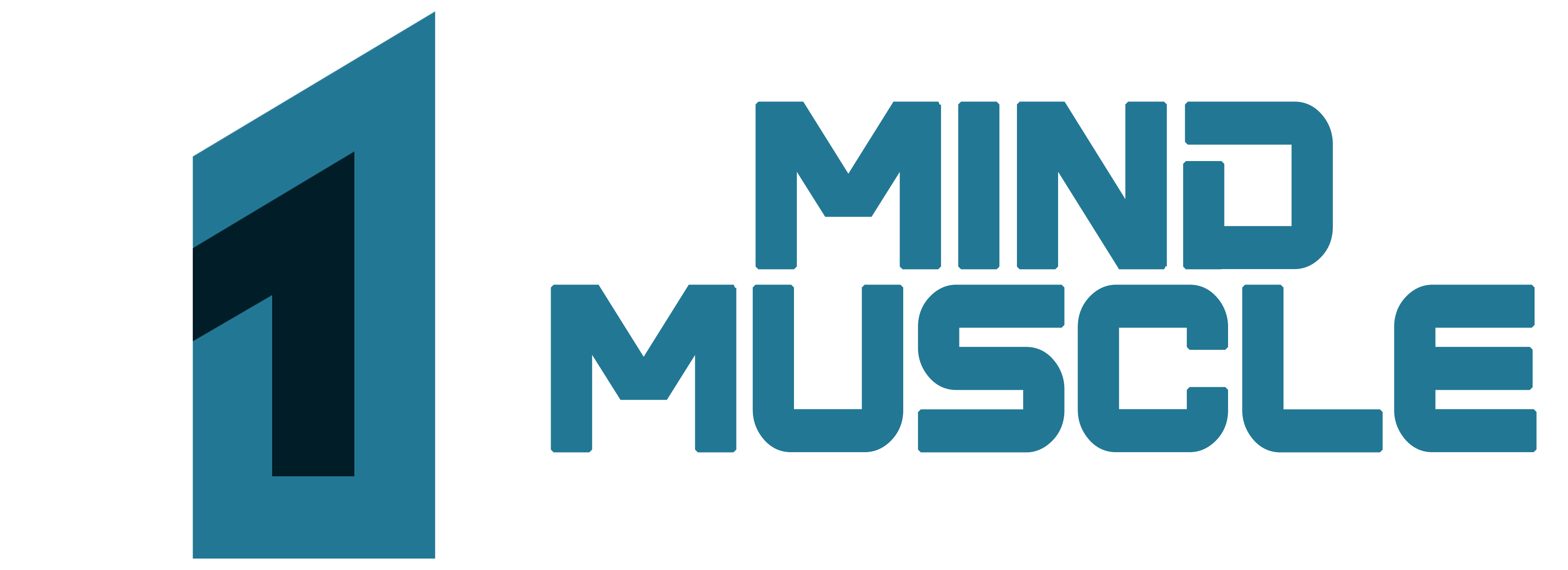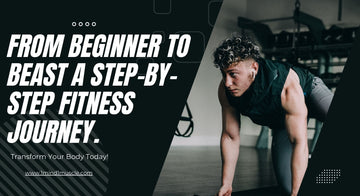Introduction
Embarking on a fitness journey can feel overwhelming, but with the right approach, anyone can transform their body and mindset. Whether you’re a complete beginner or someone looking to take your fitness to the next level, a structured plan is crucial.
This guide will take you step by step from a novice to a fitness beast. By setting clear goals, understanding nutrition, following a workout routine, and staying consistent, you’ll unlock your true potential.
Setting Clear Fitness Goals
The first step in any successful fitness journey is defining what you want to achieve. Without a clear goal, it’s easy to lose motivation or get stuck in an ineffective routine.
Identifying Personal Fitness Objectives
Before you hit the gym or start dieting, ask yourself:
- Do I want to lose weight, build muscle, or improve endurance?
- Am I training for an event, or is this about long-term health?
- What does success look like for me?
SMART Goal-Setting Strategy
Using the SMART framework helps keep goals achievable:
- Specific – Define exactly what you want (e.g., lose 10 lbs, deadlift 200 lbs).
- Measurable – Track progress (e.g., weekly weigh-ins, performance tracking).
- Achievable – Set realistic goals based on your current fitness level.
- Relevant – Align goals with personal motivations.
- Time-bound – Give yourself a deadline (e.g., "I will gain 5 lbs of muscle in 3 months").
Tracking Progress
Monitor your journey by:
- Keeping a workout journal
- Taking progress photos
- Using fitness apps like MyFitnessPal or Strava

Understanding Nutrition Basics
No matter how hard you train, your results depend largely on what you eat. Proper nutrition fuels performance, aids recovery and helps achieve body composition goals.
Role of Macronutrients
- Proteins (chicken, fish, eggs, tofu) – Essential for muscle repair and growth
- Carbohydrates (rice, oats, fruits) – Provide energy for workouts
- Fats (avocados, nuts, olive oil) – Support hormone function and overall health
Meal Planning for Fitness Success
- Eat a balanced meal before and after workouts
- Focus on whole, nutrient-dense foods
- Avoid excessive processed foods and added sugars
Importance of Hydration
Dehydration affects performance, recovery, and metabolism. Aim for at least 3-4 liters of water daily, depending on activity level.
Creating a Workout Plan
An effective workout plan should balance strength training, cardio, and rest.
Strength Training vs. Cardio
- Strength training (weightlifting, bodyweight exercises) builds muscle and burns fat
- Cardio (running, cycling, swimming) improves heart health and endurance
Workout Splits for Different Fitness Levels
- Beginner: Full-body workouts 3x per week
- Intermediate: Upper/lower body split 4x per week
- Advanced: Muscle group-focused splits 5-6x per week
The Importance of Rest and Recovery
- Muscles grow during recovery, not during workouts
- Ensure at least one full rest day per week
- Implement active recovery (stretching, walking, yoga)
Building Strength and Endurance
Progressive Overload Principle
To build muscle and endurance, you must gradually increase resistance or intensity.
Ways to apply progressive overload:
- Increase weight lifted
- Perform more reps or sets
- Decrease rest time between sets
Best Exercises for Muscle Growth
For full-body development, focus on compound movements like:
- Squats
- Deadlifts
- Bench Press
- Pull-ups
- Rows
Cardiovascular Fitness and Stamina Building
- Incorporate steady-state cardio (jogging, cycling)
- Include HIIT workouts for improved endurance and fat loss
- Gradually increase workout intensity
Staying Consistent and Motivated
Consistency is the backbone of any fitness journey. While motivation can get you started, it’s discipline that keeps you going. However, maintaining motivation and consistency isn’t always easy, especially when progress seems slow.
Overcoming Common Obstacles
Many people quit because they don’t see immediate results. Here’s how to stay on track:
- Set realistic expectations – Fitness is a marathon, not a sprint. Sustainable progress takes time.
- Find a routine you enjoy – If you hate running, try swimming or cycling instead.
- Schedule workouts like appointments – Treat them as non-negotiable.
Tracking Progress and Celebrating Milestones
Keeping track of your progress can be incredibly motivating:
- Use a fitness journal or apps like Fitbod, MyFitnessPal, or Strava.
- Take progress photos every few weeks.
- Celebrate small victories (e.g., lifting heavier, running faster, or fitting into old clothes).
Finding a Workout Buddy or Coach
A gym partner can make workouts fun and hold you accountable. If you prefer a more structured approach, hiring a personal trainer can provide guidance, correct your form, and accelerate progress.
Avoiding Common Fitness Mistakes
Even with the best intentions, many beginners make mistakes that slow their progress. Avoiding these errors can save you from frustration and injury.
Overtraining and Burnout
More isn’t always better. Overtraining can lead to:
- Fatigue and lack of motivation
- Increased injury risk
- Plateaued progress
Listen to your body and schedule rest days to allow proper recovery.
Importance of Proper Form and Technique
Lifting heavy weights with bad form can lead to serious injuries. Focus on proper technique first, then gradually increase weight. If unsure, ask a trainer or watch tutorials from trusted sources.
Managing Injuries and Recovery
If you experience pain:
- Rest the affected area.
- Apply ice to reduce swelling.
- See a professional if the pain persists.
Incorporating Advanced Training Techniques
Once you’ve built a solid fitness foundation, it’s time to level up with advanced strategies.
High-Intensity Interval Training (HIIT)
HIIT involves short bursts of intense exercise followed by rest. Benefits include:
- Faster fat burning
- Improved cardiovascular fitness
- Shorter workout times with maximum results
Try this simple HIIT workout:
- 30 seconds of sprinting
- 30 seconds of walking
- Repeat for 15-20 minutes
Strength Periodization for Maximum Gains
Periodization involves cycling intensity and volume to prevent plateaus:
- Hypertrophy phase (8-12 reps, moderate weight)
- Strength phase (4-6 reps, heavier weight)
- Power phase (1-3 reps, maximum weight)
Functional Training and Flexibility Workouts
Strength and aesthetics are important, but mobility and flexibility prevent injuries. Include:
- Dynamic stretches before workouts
- Yoga or Pilates for flexibility and core strength
- Foam rolling to relieve muscle tightness

Optimizing Recovery and Sleep
Recovery is as important as training. Without proper rest, your muscles can’t repair and grow.
Role of Rest Days in Muscle Growth
Muscles need time to heal after intense workouts. Implement:
- Active recovery (light yoga, walking, stretching)
- Massage therapy for sore muscles
- At least one full rest day per week
Importance of Sleep for Recovery
Poor sleep affects muscle growth, metabolism, and energy levels. Tips for better sleep:
- Stick to a consistent sleep schedule.
- Avoid screens before bedtime.
- Create a relaxing bedtime routine.
Best Practices for Active Recovery
Instead of complete rest, try:
- Light stretching or mobility work
- Swimming or cycling at low-intensity
- Meditation and deep breathing for relaxation
Adapting to Plateaus and Pushing Through
Hitting a plateau is frustrating but normal. The key is adapting your routine to keep progressing.
Why Plateaus Happen
- Your body adapts to your current routine.
- You’re not increasing intensity or resistance.
- You’re not eating enough to fuel muscle growth.
Strategies to Break Through Fitness Stagnation
- Change your workout – Try new exercises, adjust rep ranges, or switch up your routine.
- Increase intensity – Lift heavier, do more reps, or reduce rest time.
- Focus on nutrition – Ensure adequate protein and calorie intake for muscle repair.
The Role of Mindset in Continuous Progress
Mental toughness is key. Stay motivated by:
- Setting new challenges (e.g., learning a new skill like handstands or powerlifting).
- Following inspiring fitness influencers for motivation.
- Reminding yourself why you started.
Becoming a Fitness Beast
At this stage, fitness is no longer just a goal—it’s a lifestyle. Becoming a "beast" means mastering every aspect of fitness.
Mastering Mind-Muscle Connection
To maximize gains:
- Focus on feeling each muscle contract.
- Slow down reps to increase time under tension.
- Perform exercises with full range of motion.
Fine-Tuning Nutrition for Peak Performance
- Increase protein intake for muscle maintenance.
- Time carb consumption around workouts for energy.
- Supplement with creatine and omega-3s for recovery.
Developing Long-Term Sustainable Habits
- Stay consistent even after reaching your goal.
- Keep challenging yourself with new targets.
- Enjoy the journey—fitness is for life!
Conclusion
Transforming from a beginner to a fitness beast is a step-by-step process that requires patience, discipline, and the right strategy. By setting clear goals, understanding nutrition, following an effective workout plan, and staying consistent, you’ll unlock your full potential.
Remember, fitness is a lifetime journey, not a short-term fix. Embrace the process, push through challenges, and become the best version of yourself!
FAQs
1. How long does it take to see fitness results?
Results vary, but beginners typically see noticeable changes in 4-6 weeks with consistency.
2. What’s the best workout for beginners?
A full-body strength training routine 3 times a week combined with cardio is a great starting point.
3. Do I need supplements to build muscle?
No, but protein powders, creatine, and multivitamins can support recovery and performance.
4. How do I stay motivated when progress is slow?
Set small goals, track progress, and remind yourself why you started. Also, switch up routines to keep things exciting.
5. Can I build muscle and lose fat at the same time?
Yes! By eating a high-protein diet, training smart, and managing calories, you can achieve body recomposition.





